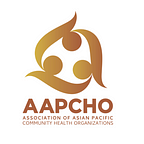By Pearl Marumoto
An island girl
Living in an island called Pristine Paradise, Palau is surrounded with beautiful vibrant colors of green and blue hues that just take your breath away. We are people who have been blessed and enriched with land and ocean beauty and living abundance. We live in a colorful and vibrant culture that has sustained our identity since the beginning of time. As Palauans we know how to laugh, sing, dance, grieve, and celebrate life and death in harmony with our environments.
Being Fragile
Being an isolated island, urbanization has found its way into our lives and have challenged our environments and our health as a people. About 80% of our food come in packages sourced outside Palau (Akiko, 2016). Our economy is fragile as proven by Covid 19 pandemic, which has closed our borders and impacted our tourism industry. The size of our island, the smallness of our population, and the remoteness of our location define our healthcare systems to be finite in resources and skills to deliver all levels of healthcare services. Limited clinical supplies and medicines are daily crisis as all supplies are dependent on flights and shipment to Palau. There is only one 80-bed hospital with a surge capacity to 100 beds during an emergency. There are 3 private clinics and smaller Community Health Centers (CHC) that are spread out in rural areas that provide primary care services to a population of 15, 000 residents.
Being Inundated
According to 2017, Palau Ministry of Health Hybrid Study, obesity in adults is at 72.5% (34.8% overweight vs. 37.7% obese). Being obese is a norm in Palau. For diabetes, 22% are diagnosed as type 2 diabetes, 36% are pre-diabetes, and 14.4% are undiagnosed. 90.1 % of adults do not access fruits and vegetables to consume required daily servings. 45.5% consume processed meats at once a day. 77.4% consume at least one (1) sugary drink per day. Meanwhile, 84.1 % do not access annual health checkups and 19.6% never had annual checkups. 49.1 % only access low impact physical activity. And 25.2% of women have experienced physical and sexual violence within the last 12 months (PalauFHSSReport2014)
Health Equity and Chronic Disease are intertwined as health concepts and outcomes when defining healthcare access and services in small island nations like Palau. It is important to accept the limited healthcare skills and finite resources to support small healthcare systems, such as hospitals and public health services to serve small populations. It is also important to accept our environments are changing, urbanized poverty indicators are slowly surfacing, violence against women are present in our communities, and traditional family values are changing.
To Accept the Now
So, why do I think the work that I do is important? It is important to find new synergies in health, environmental protection, and political agenda to translate what our data is telling us “how sick” we are into new actions. It is important to find new “Political Will” to forge policies into actions that will advocate and promote wellness and health protection as primary care processes and infrastructures in our healthcare system to effect change in our current health status. These are my actionable happiness outcomes:
1. Use Wellness as a bona fide process to transform current disease model to health protection model. Wellness as a tool for screening and education processes (institutions, providers, communities, worksites, homes, individuals) as an integral part of our healthcare system at the primary care level. This approach will put Wellness and Health protection at the entry level of our healthcare system. This approach will reduce chronic disease burdens in our living environments, may it be at homes, workplaces, and communities.
2. Institutionalized wellness screening as a mandated protocol for all healthcare entry points (private & gov’t clinics) and all insurance policies, an innovative approach to reach health equity.
3. To ensure that socioeconomic status do not widen health disparities in poverty ridden and vulnerable populations to access health and wellness services.
4. To create a new synergy to re-connect people to land and space, where land and sea are used as food sources; and spaces to create parks and recreation areas to invite more active living.
5. To integrate “inclusiveness” as a language and actionable policy for all people to access health and wellness to pursue “Happiness” as a state of mind and health as a measureable index for a small island nation’s growth.
To Dream
I would love to see someday soon the level of our human health protection is as parallel as in our environment protection and conservation efforts, hence our Pristine Paradise. As an island girl I know what living in Pristine Paradise means…because I grew up living in a true paradise…climbing guava trees, eating fresh bananas, drinking pure coconuts, swimming in clear oceans, playing baseball in the streets, eating fish and taro, drinking fresh lemonades, harvesting leafy vegetables from my mom’s home garden, and my whereabouts was always accounted for by the whole neighborhood.
I imagine a little island girl 10 to 20 years from now will be fully covered by a health insurance with wellness as a primary healthcare service. Bringing back being “healthy” is a norm living in a Pristine Paradise is my thang! I love what I do.
